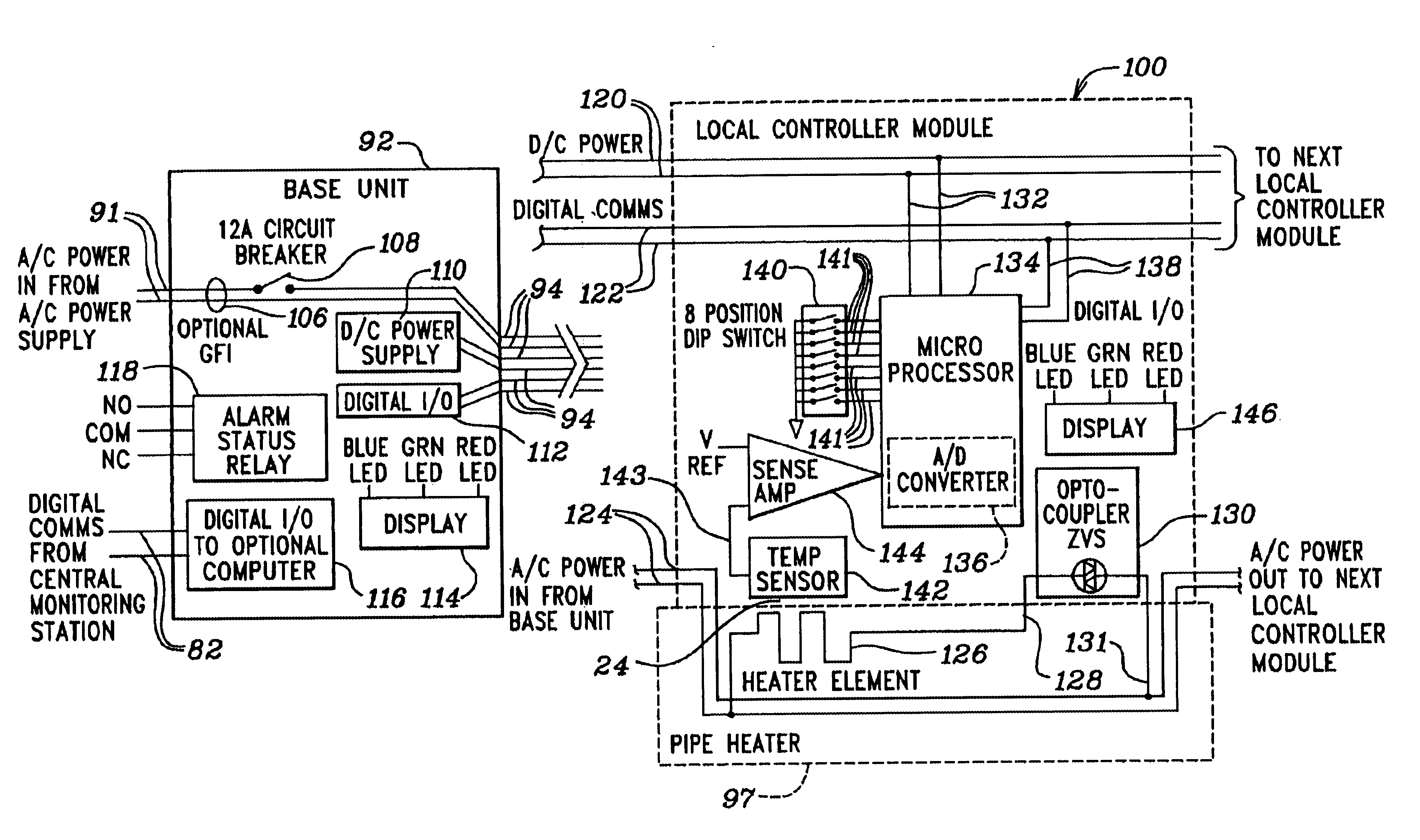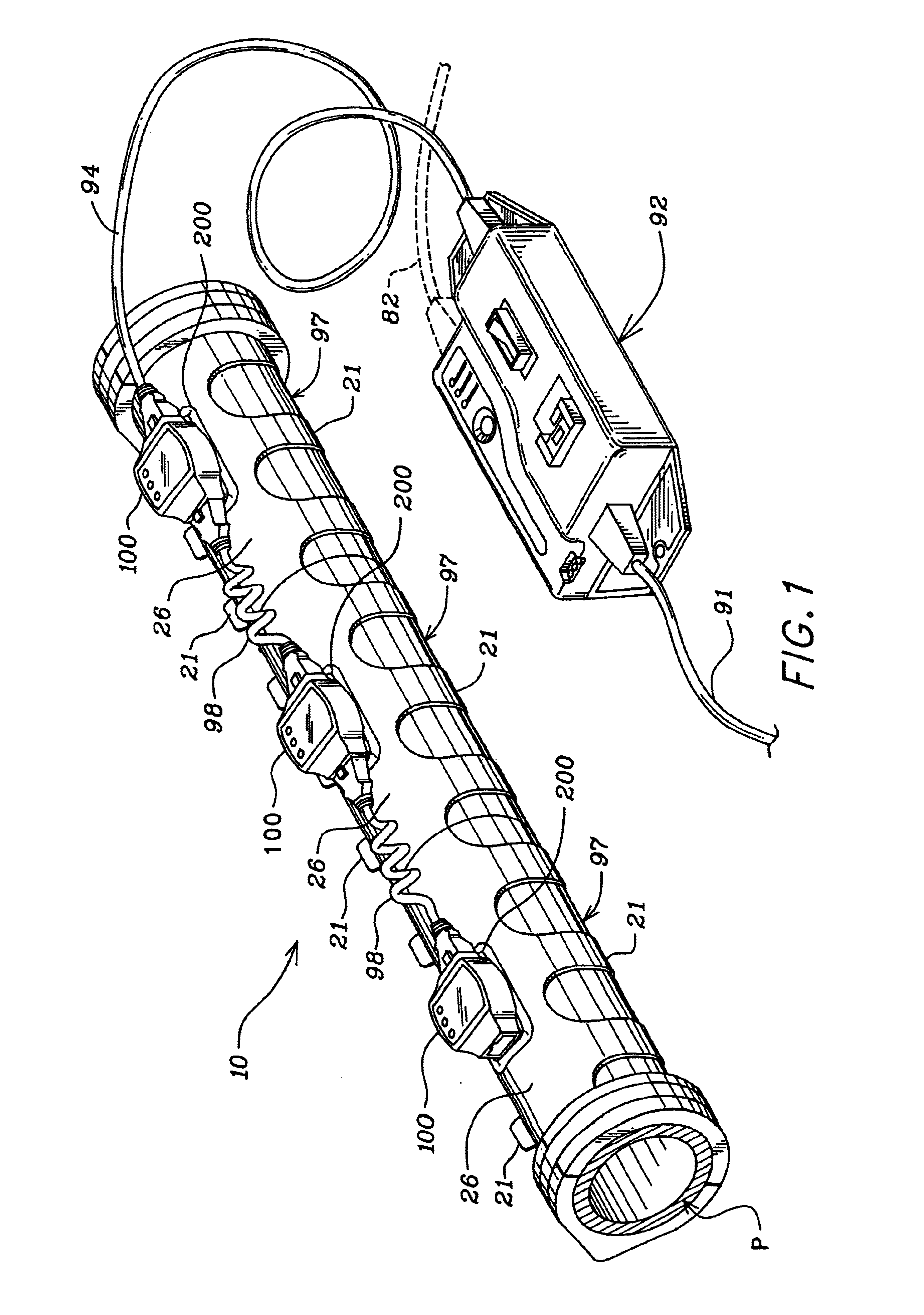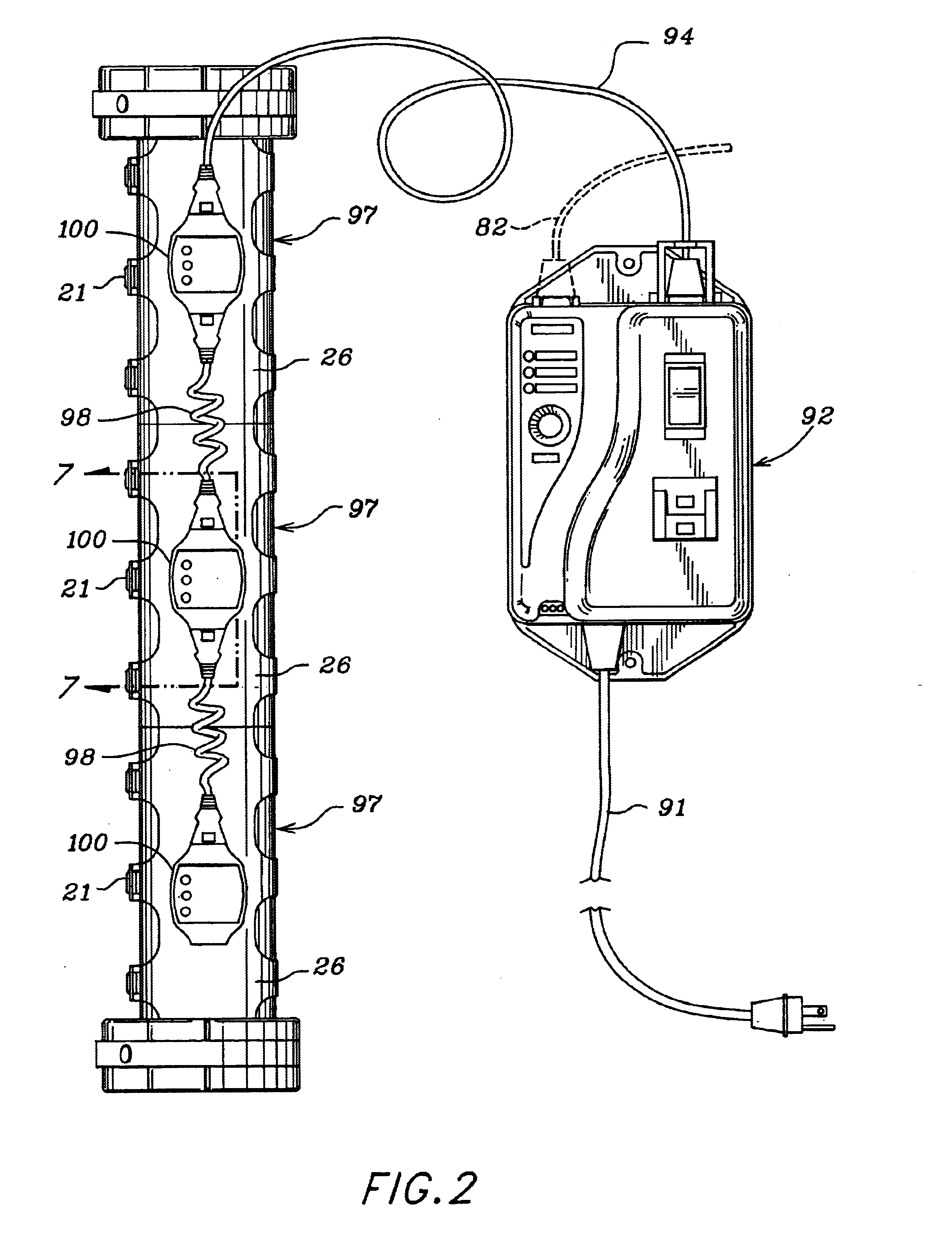Heater control system with combination modular and daisy chained connectivity and optimum allocation of functions between base unit and local controller modules
a technology of heater control and modularity, applied in the field of heater control system, can solve the problems of inability to provide only limited temperature control, inability to meet the needs of applications, and high cost of individual heater failures, so as to improve individual heater temperature control equipment, reduce wiring complexity, and minimize physical size.
- Summary
- Abstract
- Description
- Claims
- Application Information
AI Technical Summary
Benefits of technology
Problems solved by technology
Method used
Image
Examples
Embodiment Construction
[0036]A pipe heater control system 10 according to this invention is shown in FIGS. 1 and 2 with an example of three of the local controller units 100 of this invention mounted on three pipe heaters 97 in a daisy chain connection to a base unit 92. The three pipe heaters 97 are mounted on a pipe P to be heated in a typical manner, for example, as described in U.S. Pat. No. 5,714,738 issued to Hauschulz et al., which describes the structures, materials, and uses of such pipe heaters and is incorporated herein by reference for all that it discloses. While some of the pipe heater 97 structural details will be described below, suffice it to say at this point that each pipe heater 97 can be secured on the pipe P by one or more straps 21. The pipe heaters 97 and local controller modules 100 are connected together in daisy chain fashion by daisy chain cords 98, which will be described in more detail below. The first pipe heater 97 and local controller module 100 in the daisy chain are conn...
PUM
 Login to View More
Login to View More Abstract
Description
Claims
Application Information
 Login to View More
Login to View More - R&D
- Intellectual Property
- Life Sciences
- Materials
- Tech Scout
- Unparalleled Data Quality
- Higher Quality Content
- 60% Fewer Hallucinations
Browse by: Latest US Patents, China's latest patents, Technical Efficacy Thesaurus, Application Domain, Technology Topic, Popular Technical Reports.
© 2025 PatSnap. All rights reserved.Legal|Privacy policy|Modern Slavery Act Transparency Statement|Sitemap|About US| Contact US: help@patsnap.com



